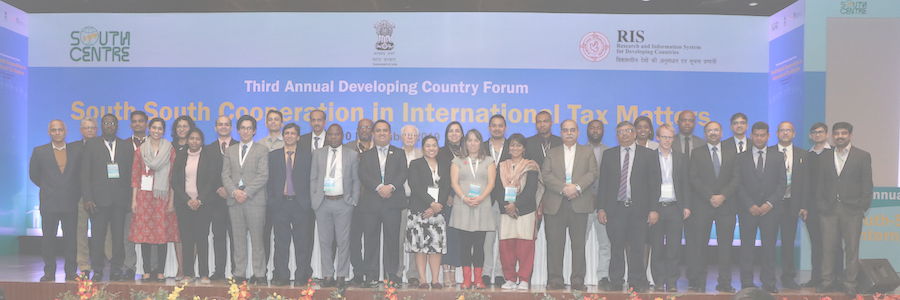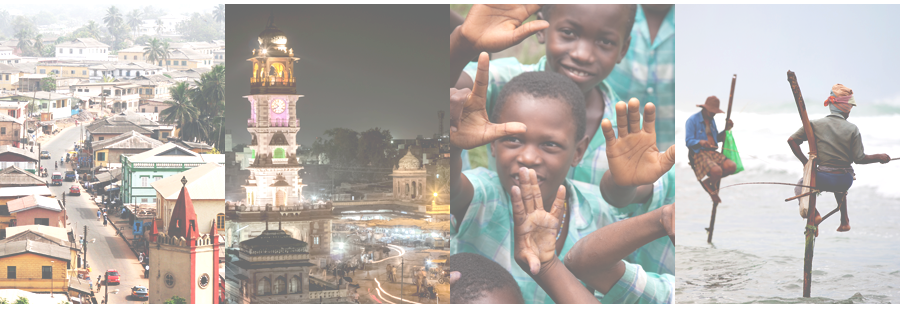SDGs – a Course Correction?
The SDGs are a step forward from the old MDGs in addressing systemic causes of poverty and inequality. However the most transformative goals and targets could be neglected in implementation through selectivity, simplification and national adaptation. This analysis is by a renowned expert on development policy analysis who is Professor of International Affairs at The New School, and was for many years director of the UNDP Human Development Reports.
By Sakiko Fukuda-Parr
The launch of the Sustainable Development Goals (SDGs) in September 2015 at the UN General Assembly was met with some harsh words. Viewed largely as ‘bloated’ and lacking in coherence, commentators suggested SDGs should more appropriately stand for ‘Silly Development Goals’ (The Economist1) or ‘Senseless, Dreamy, Garbled’ (William Easterly2).
Yet for those who had been engaged in the 3-year negotiations – or rather battles – that led to the 17 goals and 169 targets, there was a measure of satisfaction with the wide scope and depth of these goals. In large part, this is because the SDGs were a welcome departure from the MDGs. For example, the Center for Economic and Social Rights that lobbied hard for an agenda that would reflect the core principles of human rights – universality, equality and non-discrimination, justice, participation, accountability – cautiously opined “We can declare partial success in every category – which is more than we might have dared hope for in 2010 under the ‘reign’ of the deeply inadequate MDGs”3.
The SDGs are a major departure from the MDGs, reflecting a significant shift in ‘development’ as a project of the international community. They differ not just in the number of goals and targets but in their very purpose, conception and process.
The MDGs were a North-South aid agenda, driven by aid ministers seeking a new rationale for aid in the context of post Cold War geopolitics and neoliberal globalization. They were useful for donors, enabling them to mobilize support for aid budgets around a short list of memorable priorities. The SDGs are universal goals, and set targets for all – not just poor – countries, and are as relevant for the US as for Liberia.
The MDGs created a narrative of development as ending poverty and aid as charity. The SDGs recognize it to be a more complex process, involving economic growth that is also environmentally sustainable and socially equitable. The MDGs were drafted by technocrats in a closed room in the UN. The SDG process was both participatory and political, involving 3 years of broad and open consultations and debates in meetings around the world and over the internet, and complex inter-governmental negotiations in the ‘Open Working Group’ of the General Assembly’.
Broader, more transformative agenda
The SDGs address many of the key shortcomings of the MDGs and promise a more transformative agenda.
While critics of the SDGs bemoan the lost simplicity of the MDGs, it was also their major weakness, and the source of their deeply flawed agenda as I have argued in earlier publications4.
The ‘simple’ list of 8 goals and 21 targets may be memorable, but when they came to dominate the agenda and define policy priorities, simplicity became simplification. It was not just a campaign rhetoric but pretended to be a serious set of priorities with time bound targets. It was supposed to be an agenda for implementation that should lay claim to priority resources. No one would disagree with the importance of what was in the list of 8 goals and 21 targets, but what was critical was what was not there. Some most pressing contemporary challenges were left out: inequality, unemployment and stagnant wages, climate change, financial market volatility, migration, the ineffectiveness of global institutions to manage globalization, to name a few. Focused narrowly on basic needs, in fact there was nothing developmental in the MDGs, understood more expansively as a long term process of structural change in the economy and society.
The outcome focus, with concrete and measurable targets was another claimed virtue of the MDG. But this was another source of weakness as quantification is inherently reductionist. The MDGs created a narrative of development as meeting these basic needs targets. The use of numerical goals decontextualized and reified what are quintessentially context specific and intangible processes of societal change. The goals served to justify target driven strategies that rely on short term fixes, obscuring the need to address the root causes of poverty and unequal development that lie in power structures and social relations whether it is women’s access to land or trade rules that disadvantage developing countries. The vociferous controversies of the 1990s over the liberalization agenda of structural adjustment programmes subsided in the 2000s under all the attention paid to meeting the basic needs.
Yet another so called virtue of the MDGs was their ambition to achieve the 2015 goals in all countries. But this meant neglecting national contexts. They were one size fits all targets to be achieved in each country and against which governments would be held accountable. Ignoring the starting point, they were a biased metric, unfair to countries farthest behind with the largest challenges to meet the 2015 targets.
The SDGs reverse some of these shortcomings and include stronger elements for transformative change. To begin with, they include ‘means of implementation’ as a goal of its own (Goal 17) and as targets for each goal, recognizing the need to change policies and institutions if transformative change is to take place. To illustrate, in the field of health they include targets for important policy choices: (i) target 3b on Research and Development in vaccines and medicines, access to essential medicines, and affirmation of TRIPS flexibilities; (ii) target 3c on health financing; (iii) target 2c to stabilize food commodity markets; (iv) target 1b on pro-poor and gender sensitive development strategies; and (v) target 6b on local community participation in water management.
The adoption of a stand alone goal on inequality (Goal 10) that addresses disparities within and between countries is a significant departure from the MDGs. A sensitive issue for many politicians this is a goal that requires a reversal rather than acceleration of current trends in many countries, and relevant to all countries regardless of the level of income.
Another important reversal is the inclusion of goal 16 for just and inclusive institutions. This speaks not only to institutions of national governance but also global governance, including an explicit reference to “strengthening the participation of developing countries in institutions of global governance” (target 16.8).
Potential pitfalls in implementation: selectivity, simplification and national adaptation
While the SDGs offer a broader agenda that has potential for course correction, will they make a difference? There is a risk that the most transformative goals and targets would be neglected in implementation through selectivity, simplification, and national adaptation.
With 17 goals and 169 targets, which handful will receive policy attention, mobilize effort and resources? Selectivity could lead to neglect of goals and targets that would address structural issues. It is widely believed that the MDGs mobilized action, yet not all goals and targets were the same. Some such as employment and hunger were poor cousins until the 2008 financial crisis and recession hit. Will SDG 10 to reduce inequality within and between countries, or target 5.a to ensure legal right of women to land ownership receive attention?
The carefully negotiated language of the 17 goal agenda emphasizing intangible qualitative objectives of equitable and sustainable development has led to a complex language. The temptation would be to simplify this language and strip away the important qualifiers. Already, a private initiative to publicize the SDGs – Global Goals – has simplified them, shortening the titles and reinterpreting them in the process. Barbara Adams5 points out in her recent Social Watch blog, ‘the concept of “sustainable development” is completely lost’ as words like ‘just’, ‘inclusive’, ‘sustainable’ are removed and replaced by ‘responsible’ and ‘strong’.
Another risk is the process of national adaptation that reduces political pressure on national governments to address the political causes of poverty and inequality. It can then be an invitation to water down the ambition of the SDGs. Implementation of the inequality goal is particularly challenging as it is one of the few goals that requires a major change in course from the trends of the last decade6, including shifts in the economic model that has been promoted over the last decade.
For these Goals to be a ‘course correction’ in reality, the challenge will be to ensure that the hard won gains on politically contentious issues are not lost in implementation. Global goals are a politically negotiated consensus that has no enforcement mechanism built in. Their power lies in the normative value of a call to action. They make a difference when championed by committed indivisuals and organizations. MDG8 on trade, aid and technology was not championed. The onus now falls on civil society groups to leverage the SDGs as course correction.
Endnotes:
1 The Economist, March 28, 2015.
2 William Easterly, Foreign Policy, September 28, 2015.
3 CESR blog post “Strong Commitments to Human Rights Survive in Final SDG Text, Despite Sordid Final Compromises”, http://www.cesr.org/article.php?id=1758, accessed December 7, 2015.
4 See Fukuda-Parr, S. (2012). Should global goal setting continue, and how, in the post 2015 era? UN Department of Social and Economic Affairs (DESA) Working Paper 117. http://www.un.org/esa/desa/papers/2012/wp117_2012.pdf; Fukuda-Parr, S., A.E. Yamin, and J. Greenstein (2014). The Power of Numbers: A Critical Review of Millennium Development Goal Targets for Human Development and Human Rights. Journal of Human Development and Capabilities. 15:2-3. http://www.tandfonline.com/doi/full/10.1080/19452829.2013.864622.
5 Barbara Adams (2015). Public SDGs or Private GGs? http://www.socialwatch.org/node/17055.
6 Susan Nicolai, Chris Hoy, Tony Berliner, Thomas Aedy (2015). Projecting progress: reaching the SDGs by 2030. http://www.odi.org/publications/9895-sdgs-progress-scorecard-projecting-2030-development-goals.
Sakiko Fukuda-Parr is Professor of International Affairs at The New School, New York. Her recent research focuses on human rights and economic policy, and she has published extensively on critical reviews of MDGs. She is a member of the UN Committee on Development Policy and the UNSD’s High Level Panel on Access to Medicines.












